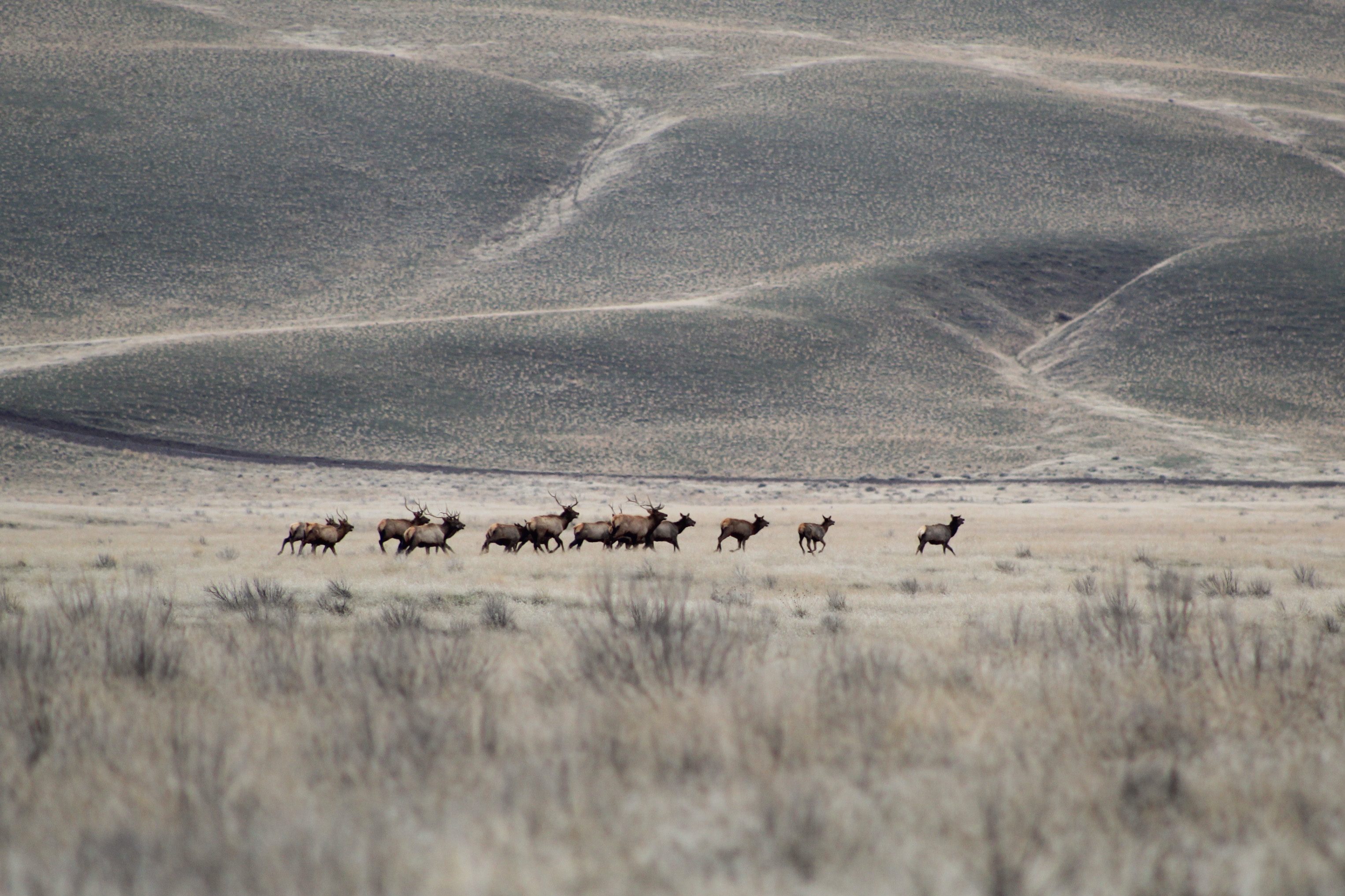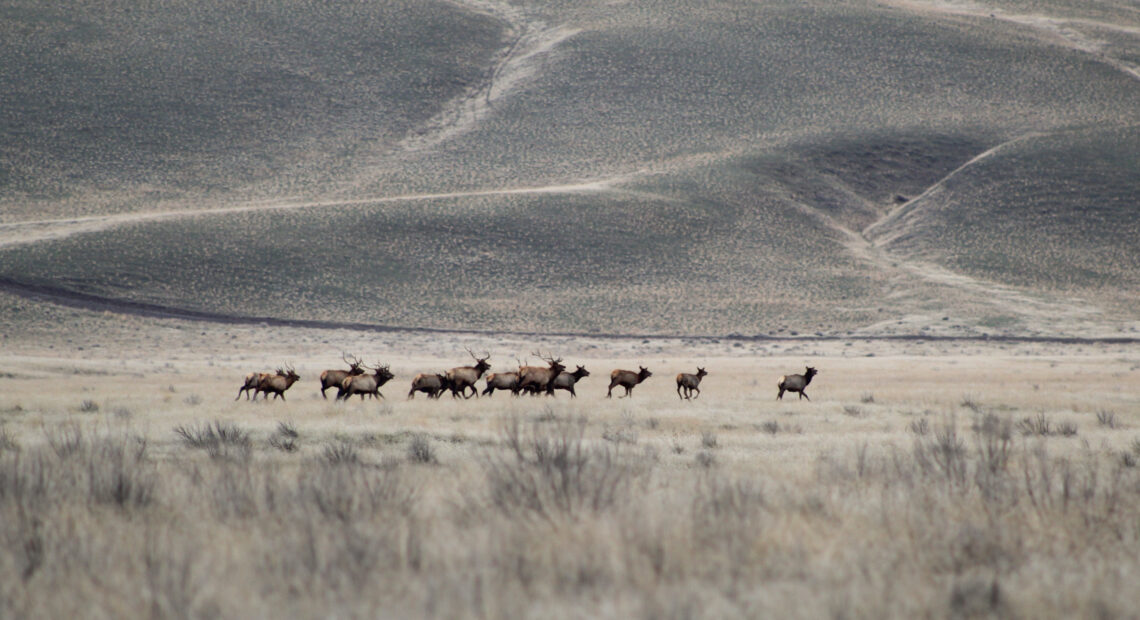
A return after seven decades: Inside the Yakama Nation’s elk hunt on the Hanford Reach
Listen
(Runtime 3:50)
Read
A video captured the moment a maroon Toyota 4Runner paused along a rough gravel road on the Hanford Reach National Monument this past winter.
Then, several massive bull elk, some cows and yearlings crossed just about 100 yards in front of the vehicle.
This was a moment the people of the Yakama Nation had waited a long time for. They were hunting the flanks of Rattlesnake Mountain – or Lalíik – again.
“It’s not really anything to brag or boast about, that we honestly did this in the right manner to honor that, that area, and again to have that connection,” said Jeremy Takala, who is on the Yakama Nation’s Tribal Council and the chairman of the nation’s Fish and Wildlife Committee. He was also one of the hunters. “They’ll continually have that respect as well for that land,” Takala said.
It’s been more than seven decades since Yakama Nation people have hunted on the flanks of Rattlesnake Mountain, near the Tri-Cities in Washington state.
That is because the federal government restricted the lands that encircle the Hanford cleanup site during the Manhattan Project and the Cold War. Many restrictions are even in place today. This past December, some 40 Yakama Nation people and staff tracked a massive herd of elk that roams those federally protected lands.
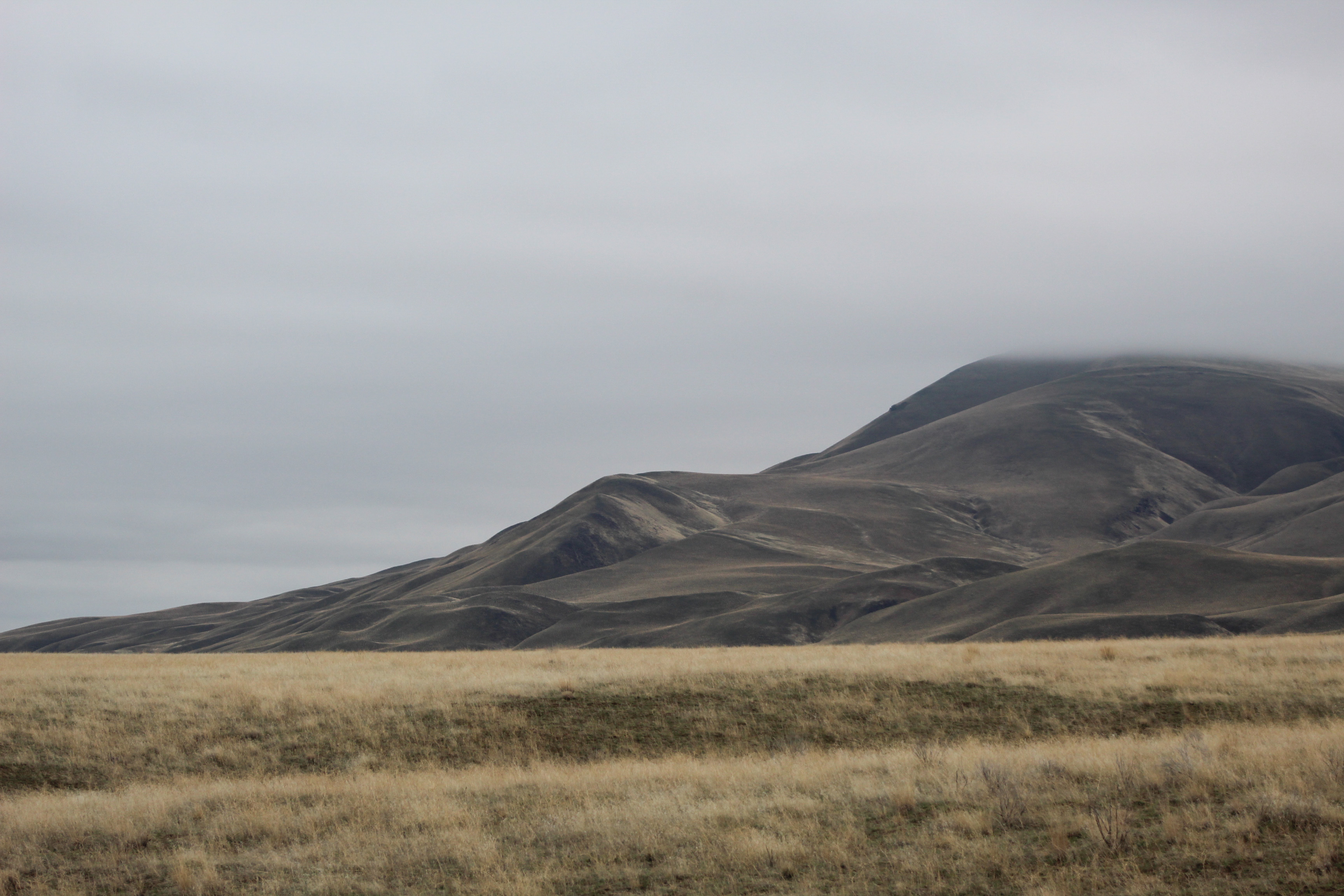
The gentle folds of Rattlesnake Mountain, or Lalíik, on the Hanford Reach National Monument rise into the dense fog in December 2023.
(Credit: Star Diavolikis / Yakama Nation)
Hanford and the Reach
The Hanford Reach is a 196,000-acre horseshoe of land that encircles the Hanford nuclear cleanup site. State Route 240 and the Columbia River roll right through it.
The circle of land is sort of like a toxic jelly donut: although the middle is gooey with stewing radioactive waste. It’s the leftovers from making plutonium for bombs during World War II and the Cold War.
The perimeter of this massive jelly donut largely has been protected since the mid-40s. It’s awash with sagebrush, bunchgrass and many desert-dwelling critters.
The Hanford Reach National Monument was established as a protected area by President Bill Clinton in 2000.
Besides being an important place during World War II, the very edge of the Reach, the rim and flanks of Rattlesnake Mountain are perhaps of the most sacred sites for the Washat religion, practiced by many Columbia Plateau tribes.
Rattlesnake Mountain or Lalíik
Rattlesnake Mountain, or Lalíik, has been important since the beginning of time, according to the Yakama Nation and other plateau tribes.
“It is as some would say the birthplace of the Washat faith,” said Rose Ferri, the project tracking and resource analyst within the Environmental Restoration / Waste Management Program for the Yakama Nation. “That is where you know the prophet Smohalla received the visions for the Seven Drums religion and the Washat.”
Right now, there is conflict encircling the mountain and the Reach. Former Congressman Doc Hastings, a Republican, has tried to open the gates to Rattlesnake Mountain by attaching language to the 2015 Defense Appropriations Act. The Yakama Nation and other Northwest tribes oppose that because of the sensitive nature of the area and the lack of consultation with the tribes. In 2023 the Yakama Nation sent a letter to Washington state senators to rescind that language.
“Even tribal members don’t willy-nilly go up there and hang out and look around so they can enjoy the view,” Ferri said. “They go up there and they will do ceremony. It’s a place of prayer and vision and whatnot.”
She said tribal members will generally prepare themselves with a sweat to cleanse themselves to be able to go up there.
“So, to just open the gate and tell the public, ‘Bring your mountain bikes and come hiking along up here,’ and whatnot. That is not the nature of that traditional cultural property – it’s highly spiritual,” Ferri said.
So, for the tribes not to be able to visit, practice their religion, gather foods and hunt, has been very hard, Takala said. He explained the men prepared for this hunt by going through a traditional sweat, singing songs and praying.
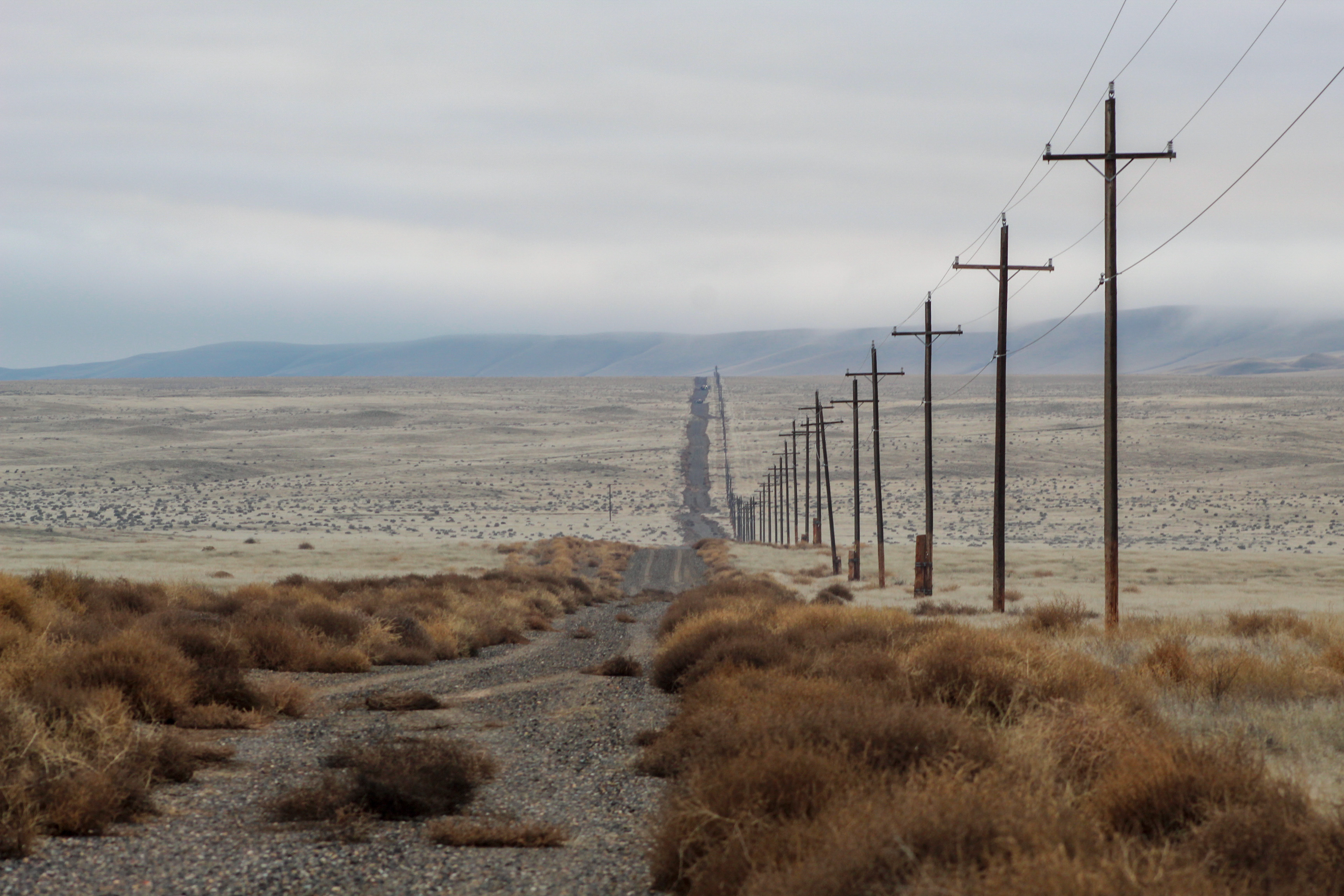
Invasive tumbleweeds grow in disturbed areas best on the Hanford Reach National Monument near Richland, Washington.
(Credit: Star Diavolikis / Yakama Nation)
Making tracks
Perhaps one of the best things about returning was what the Yakama people called “making tracks,” or putting footsteps on the landscape again.
They announced themselves to the land and told stories. They even packed traditional foods like dried deer and elk and canned salmon. This lets the land know they were there, Takala said.
“The land knows us,” Takala said. “We tell the land our name in our language to you know, recognize who you are, so it knows that we are not any stranger. That you are coming to connect with the land that our people have had in the past.”
The Yakama Nation hunters believe these hunts also are helping to put the ecosystem back in a bit more balance. In the 1970s there were just a handful of animals on the Reach, according to state Fish & Wildlife officials. Now, there are an estimated 2,450 elk roaming there. The ground can only really sustain about 350, according to a state Fish & Wildlife plan from 2002, which still is used today.
It could take many more hunts to reduce the population and stop the animals from damaging the delicate shrub steppe desert ecosystem with many rare plants, Yakama Nation officials said.
They said the Yakama Nation and three agencies, U.S. Fish and Wildlife Service, the U.S. Department of Energy and Washington State Department of Fish and Wildlife, are all involved and are trying to determine a plan to kill mostly cows that drive the population, not bulls.
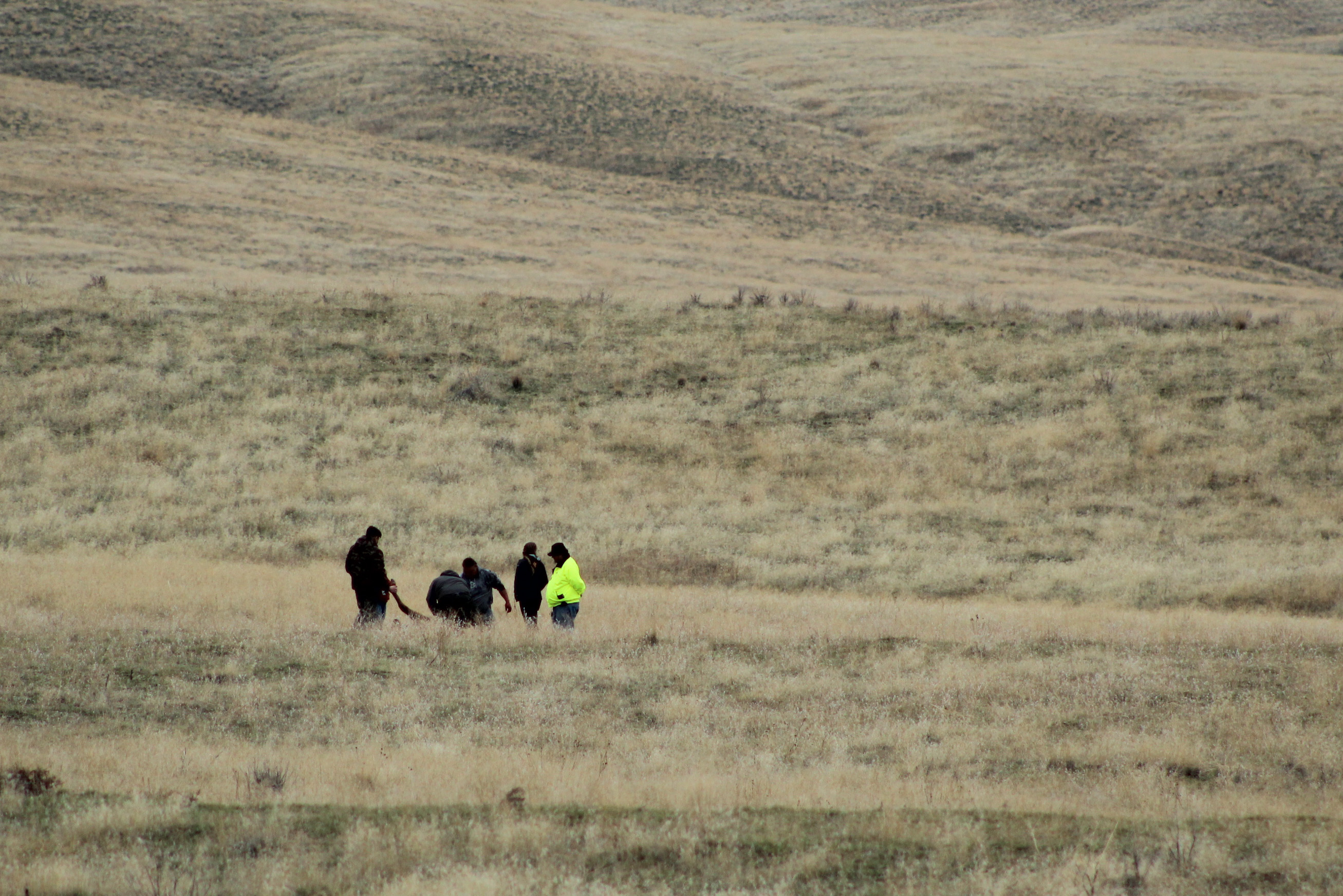
Hunters work quickly on the Hanford Reach National Monument near Richland, Washington after the elk kill to cool and pack out the meat.
(Credit: Star Diavolikis / Yakama Nation)
The hunt
On the Yakama hunt in December, 13 animals were killed.
All parts of the animals were packed out of the remote draws and fields, and used. Perhaps some of the most meaningful times for Takala were when he was out in remote areas scouting for the animals, he said.
“So, you actually did have to get out and kind of hike and sneak up on them, just as we’d normally do,” Takala said. “Looking at the land. Taking a break here and there. Just touching the ground. Just taking in the views.”
Takala said he liked to think about what the Reach and Hanford looked like before the Manhattan Project.
“To think about what it was like for our people of the area going and camping at these sites along the river, fishing, the different gathering activities throughout the year,” he said.
The Yakama hunt took two days and was difficult work. It took many people hours to process and pack the animals out by foot, to roads. In all, there were about 11 hunters and 25 support people who participated in the hunts on Dec. 20 and Dec. 27.
U.S. Department of Energy contractor employees scanned the animals with Geiger counters to make sure the animals were safe to eat and not contaminated with radioactive waste.
Yakama Nation environmental expert employees recorded the readings of the screenings on site to get the data to Tribal Council immediately, said McClure Tosch, a Yakama Nation natural resources scientist.
There was no radiation found on the elk above regular background levels in the Northwest, he said.
‘To gather yourself’
Ultimately, high places and desolate places serve a special purpose for all people, said Tribal Councilman Terry Heemsah Sr.
“It’s not just to go get tired, walk up there,” Heemsah said. “It’s to pray. To gather yourself. Everybody needs it … To find that connection with the earth again, life. That’s what that’s about.”
The Yakama Nation plans to return to Lalíik in the next few weeks with women and girls to dig sacred roots. That also will be the first time this tradition will be performed by the Yakama people on the Reach in more than 70 years.
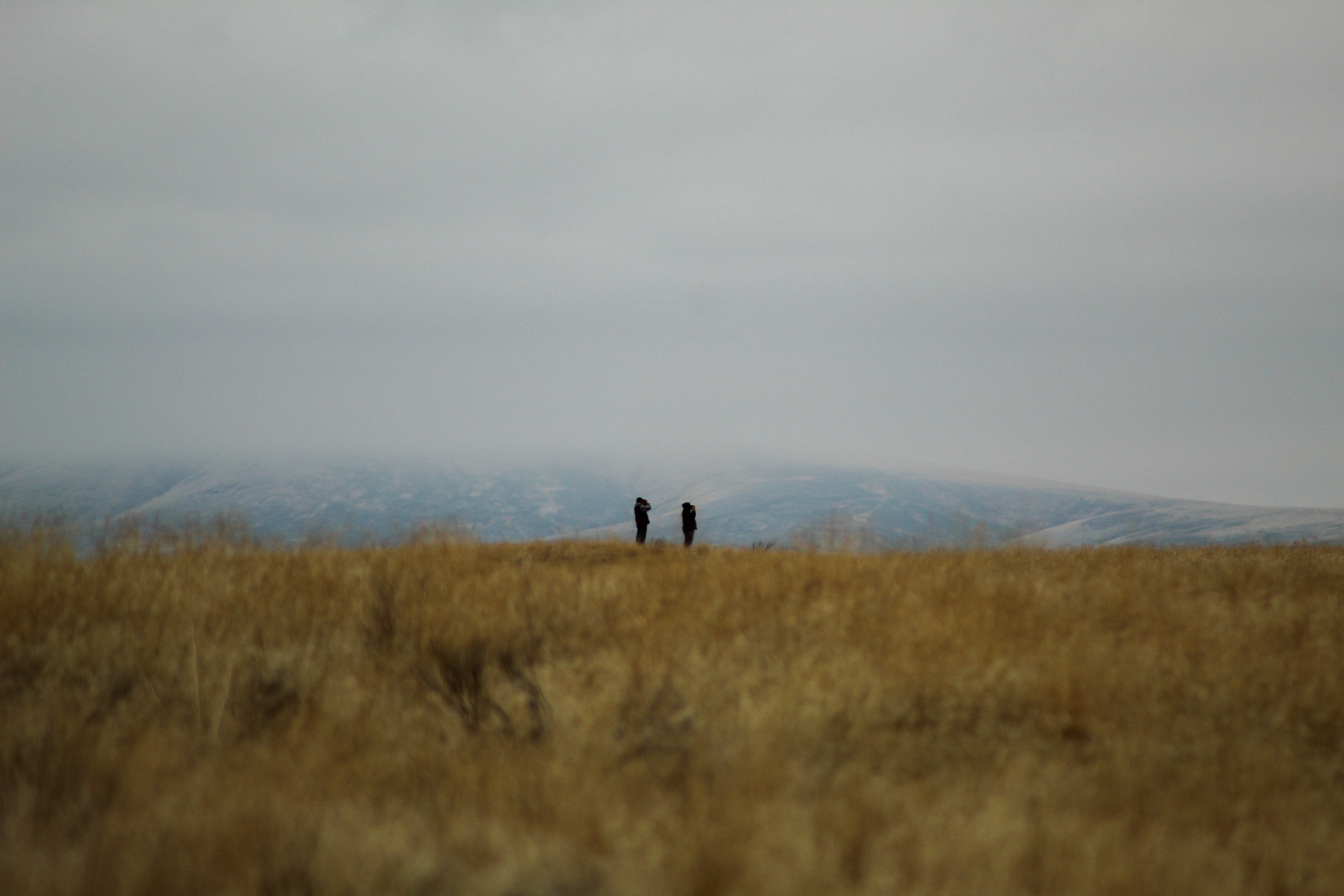
Yakama Nation members and staff hunted elk on the Hanford Reach National Monument in December of last year.
(Credit: Star Diavolikis / Yakama Nation)

